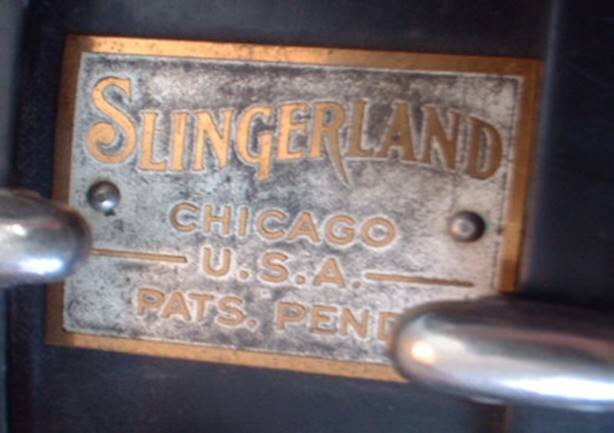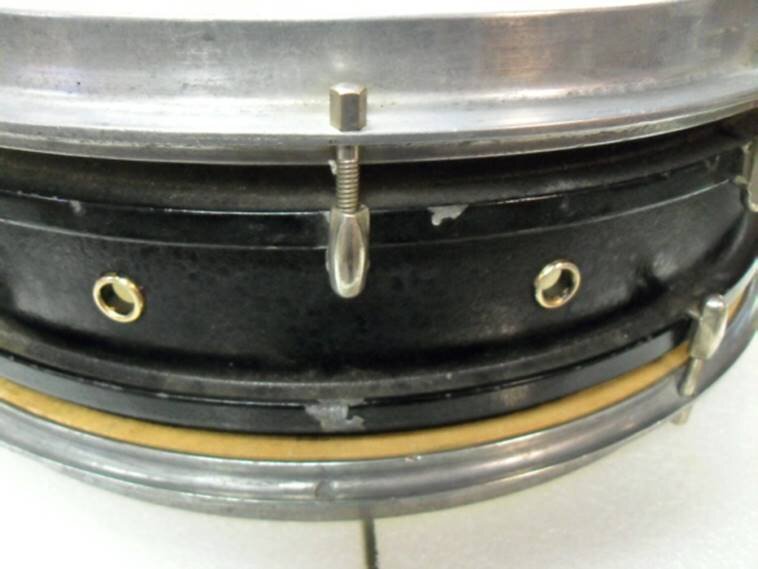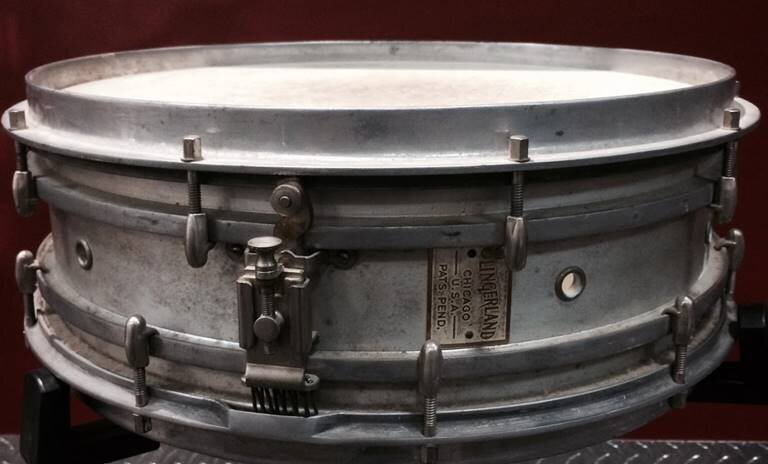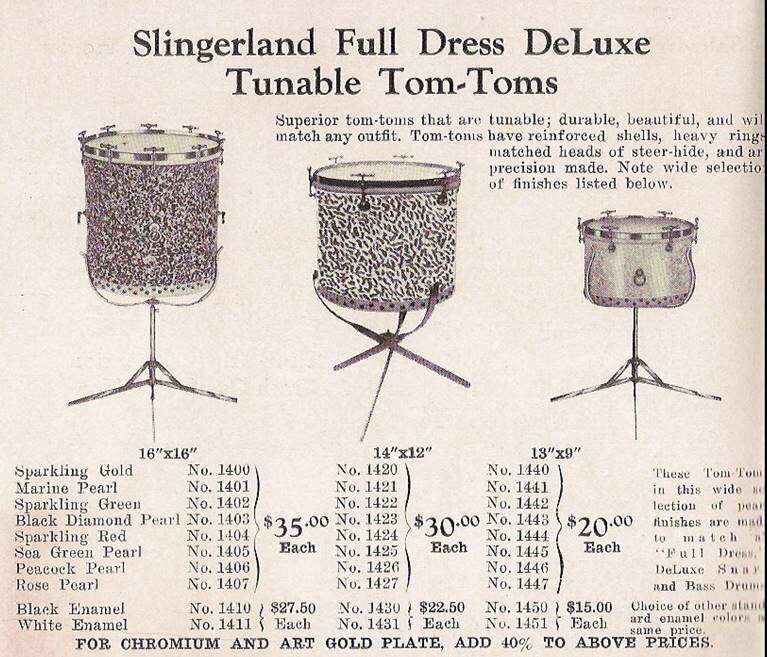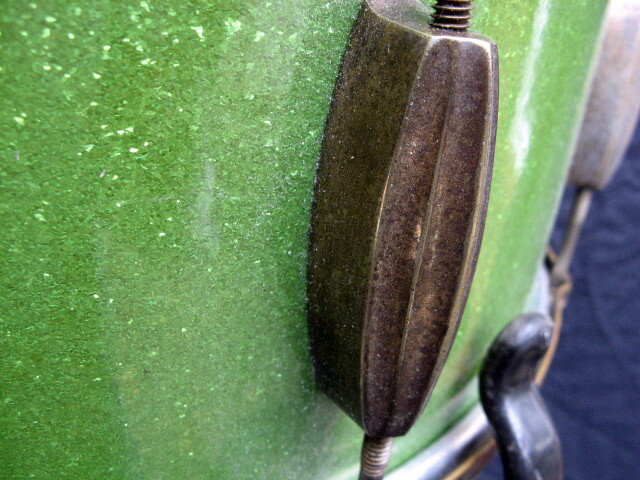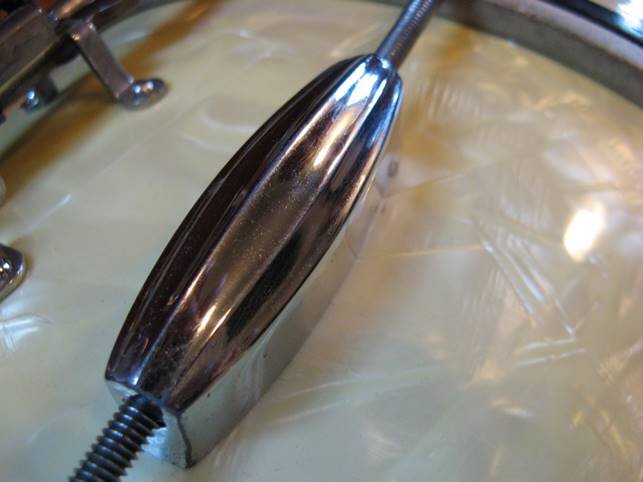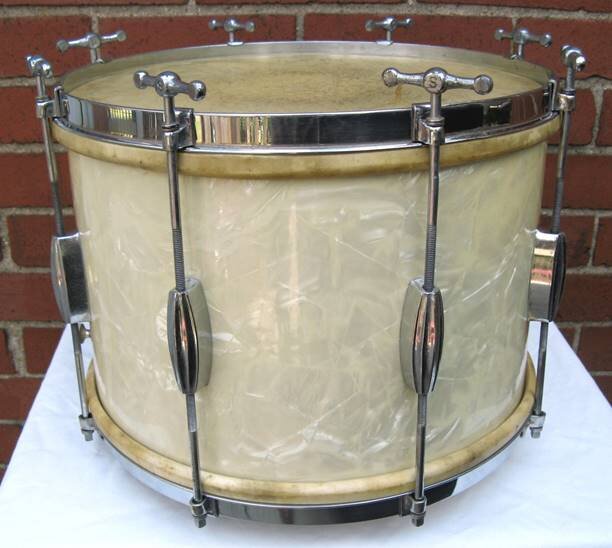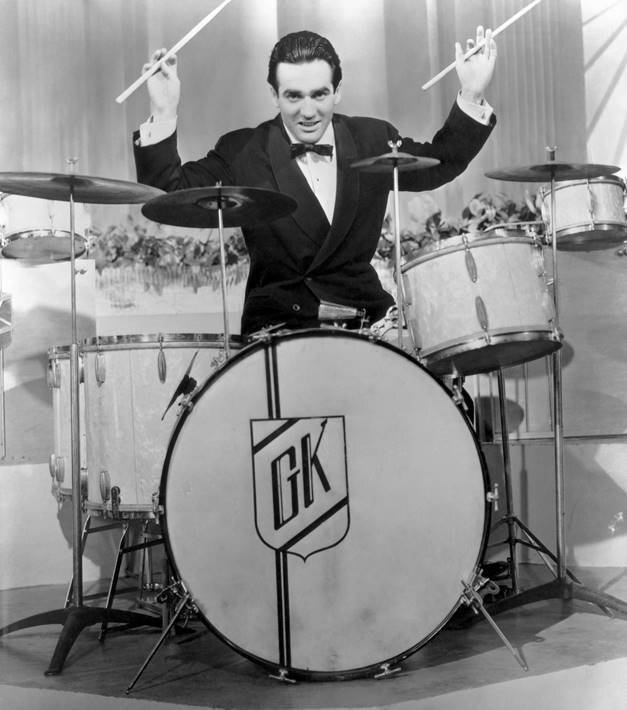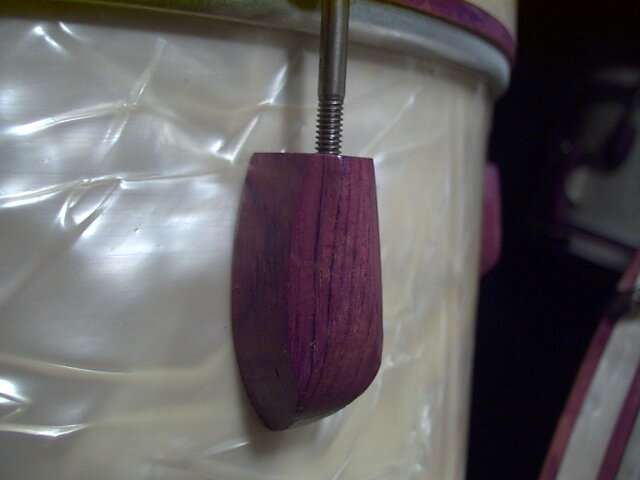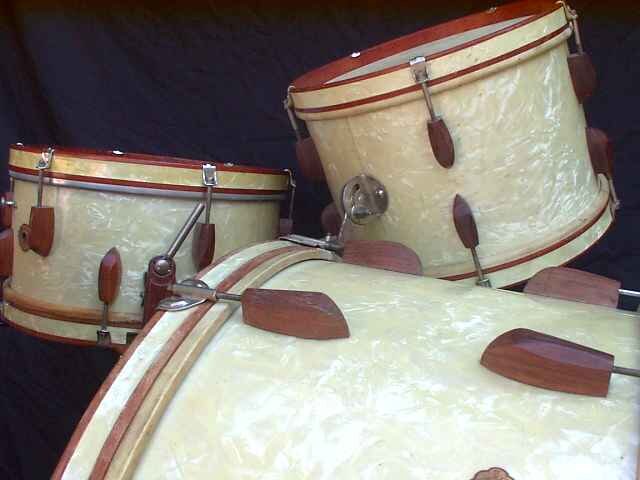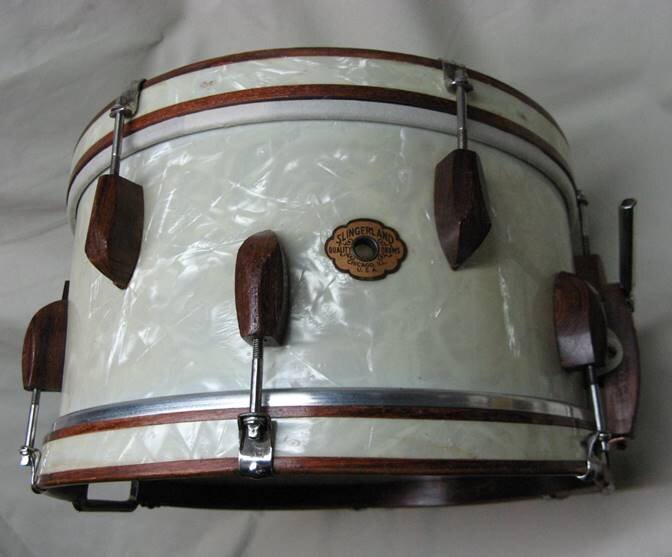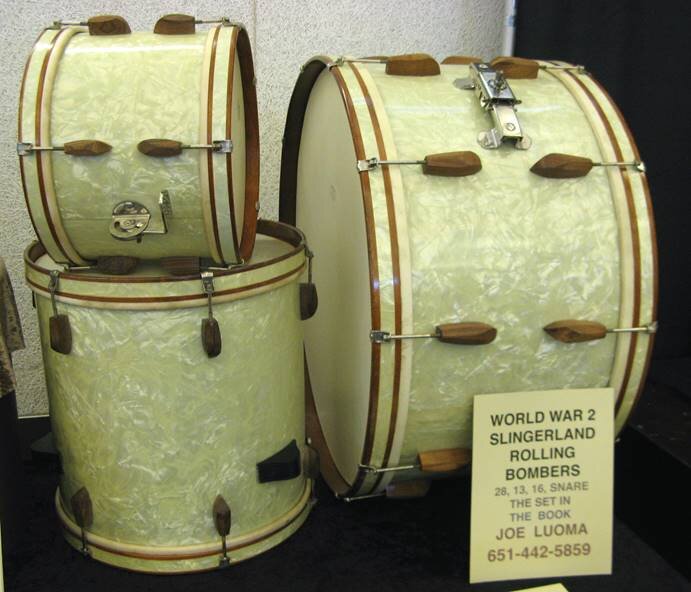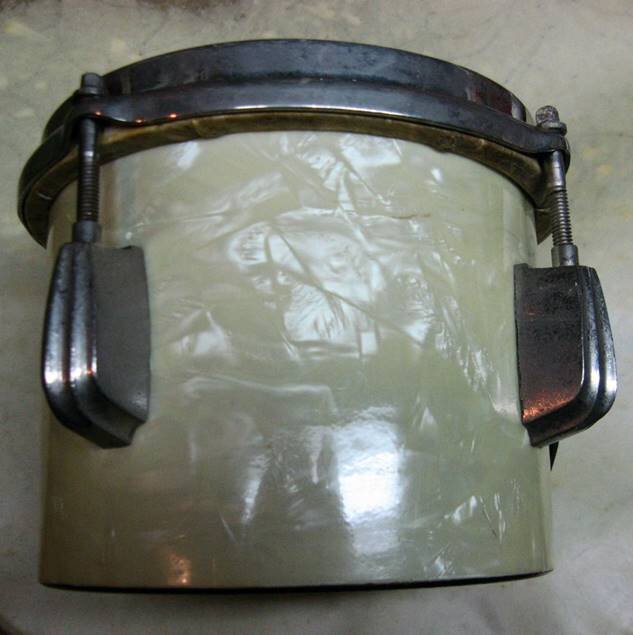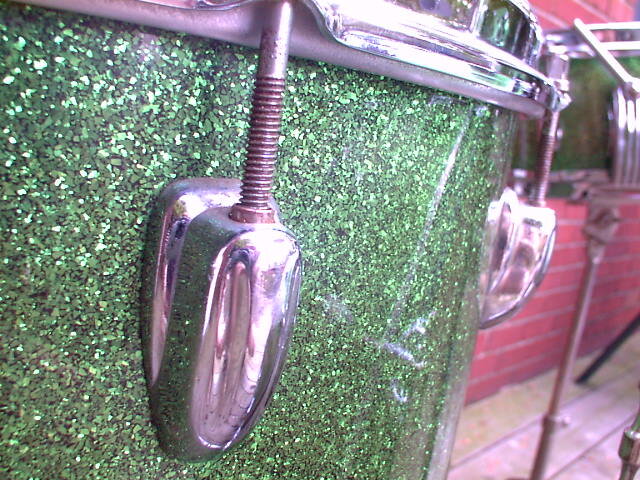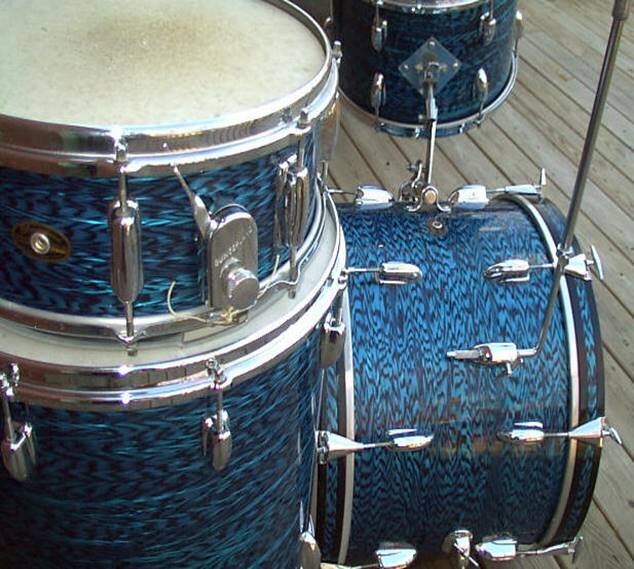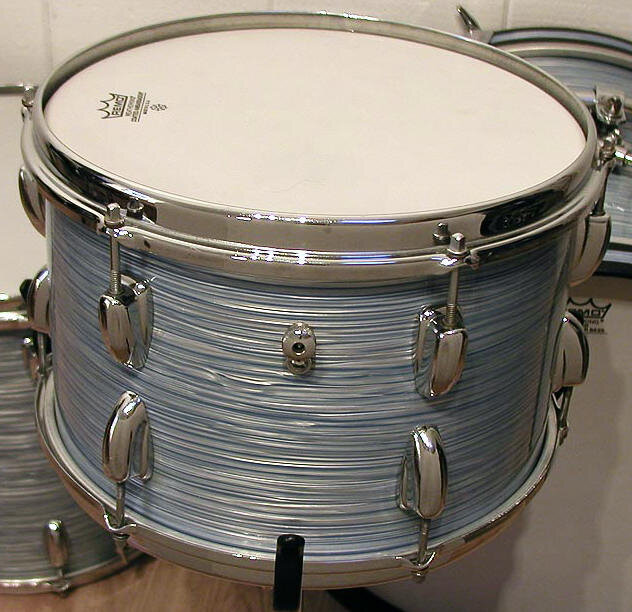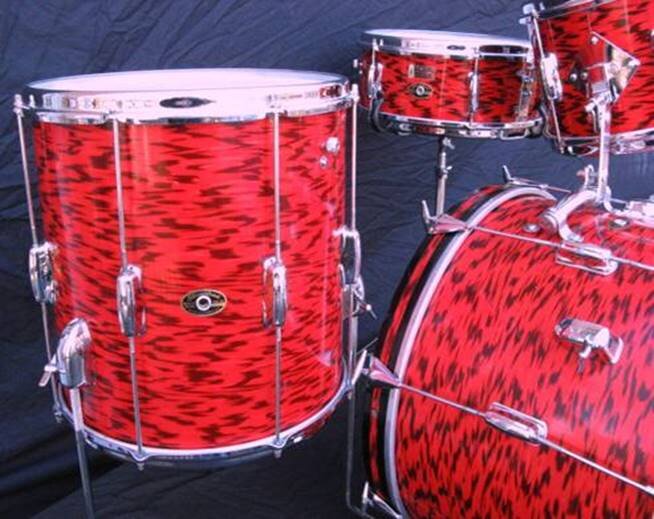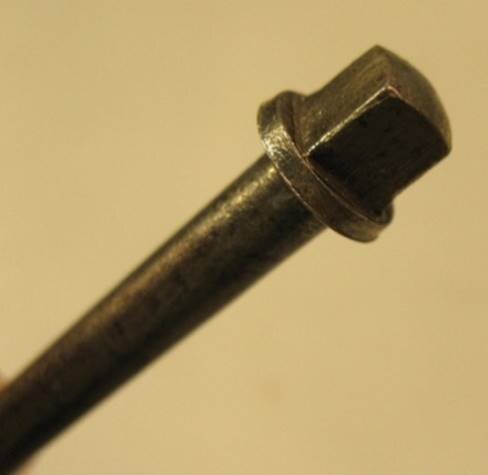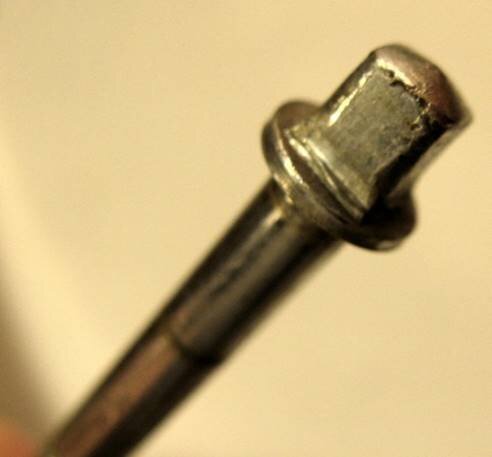SLINGERLAND LUGS
As was previously mentioned, most companies used the standard tubular lugs in the 1920’s. Slingerland was no exception and were a little late in adopting a more modern approach to the design of their lugs. Here are some examples of early Slingerland tube lug drums:
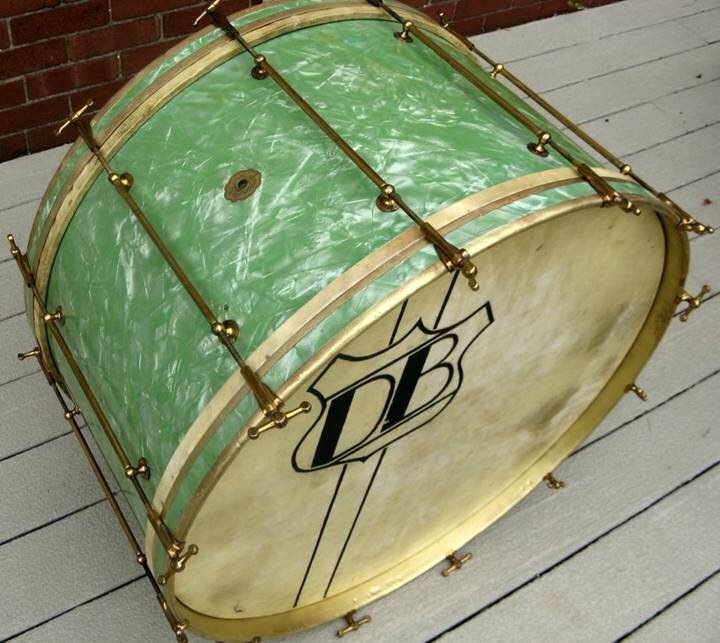
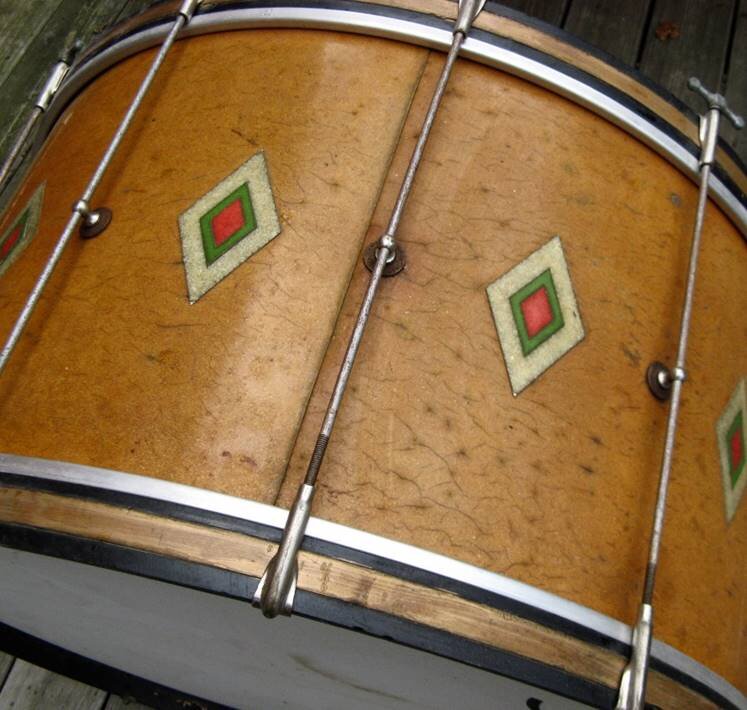
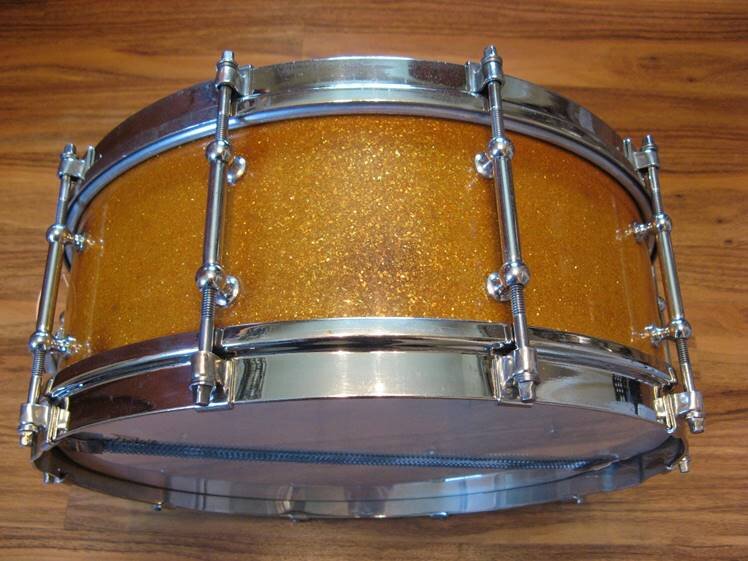
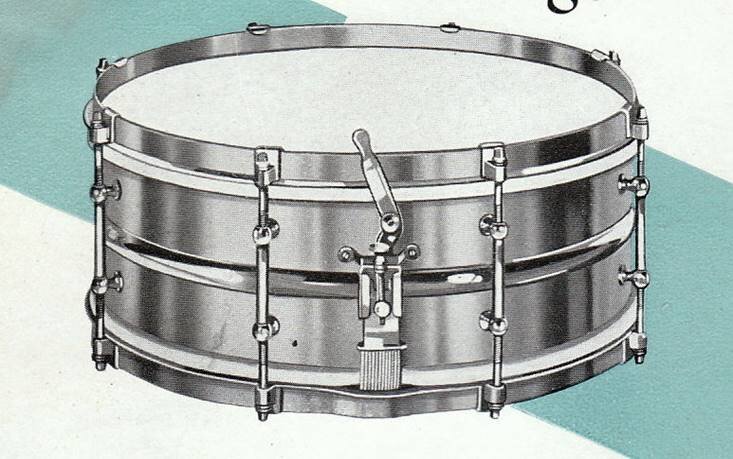
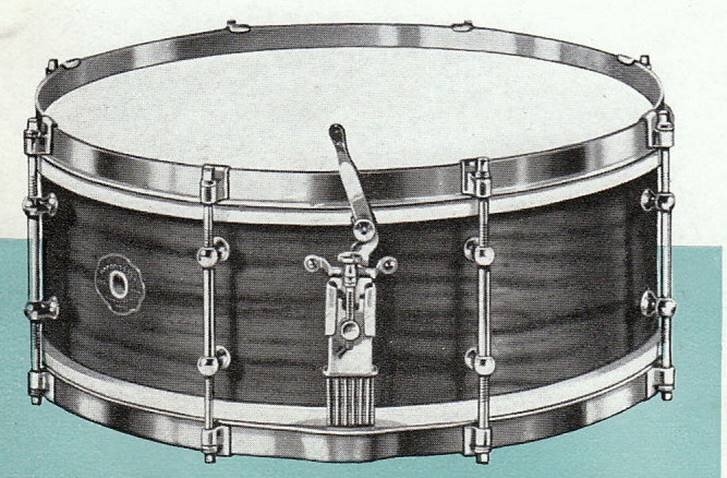
Slingerland did produce an odd looking drum called the “Geisler” around 1927 that was similar to a banjo. It had banjo clips that were attached to flanges on the shell. This drum was not really a regular Slingerland production model and it didn’t really have lugs but deserves mention.
Note the #967 strainer. It is believed that the original #967 strainers were actually made by the Liberty Musical Instrument Company prior to Slingerland’s venture into drum manufacturing. In 1927, the Liberty company and its drum-making equipment were purchased by the Slingerland banjo and Drum Company.
Below is an early 1930’s brochure showing tom toms with a simple tensioning system
THE STREAMLINE LUG
In an effort to modernize their drums, Slingerland introduced their Broadcaster line of snare drums in 1935. These new models featured their version of the cast metal lug casing, called the “Streamline” lug. This short-lived Broadcaster line was soon discontinued and the new “Radio King” line was launched the following year. Unlike Leedy’s design, the new Slingerland Radio King Streamline lugs still had no swivel inserts but instead, their lugs had the threads tapped directly into the casting. This proved to be less than desirable, causing the threads to strip, so following Leedy’s example, they soon added an internal spring and swivel insert.
Slingerland Broadcaster tapped lugs
Below is a very rare Broadcaster era (1935) tom tom with eight tapped streamline snare drum lugs
First version of the Streamlined lug (no springs or inserts)
A specially designed Streamlined lug was used on early metal shell drums (Broadcaster and Radio King). Below is one of the first metal Radio King snare drums showing these lugs.
By 1937 Slingerland added springs and threaded inserts to their streamlined lugs. Over the years, there were several variations on the lug design. Metal thickness varied from casting to casting. Also, there were numbers stamped inside some versions of the lug. A number “1”, “2”, and “3” can be seen, Two other types had no numbers or markings.
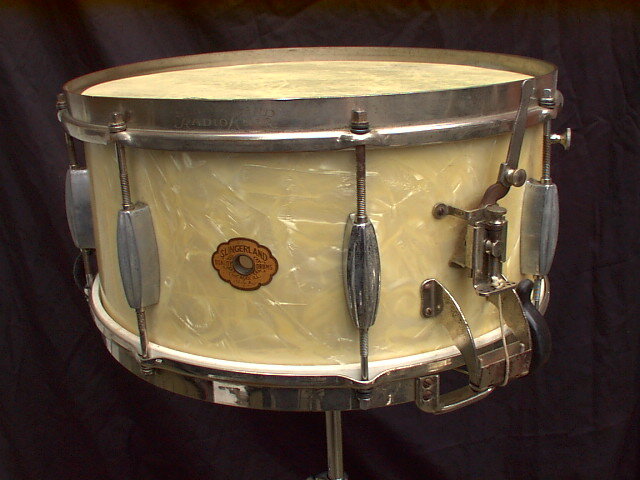
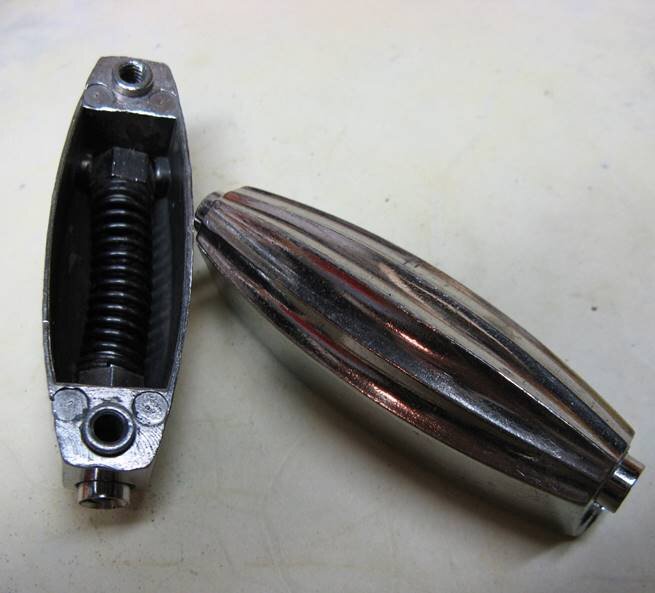
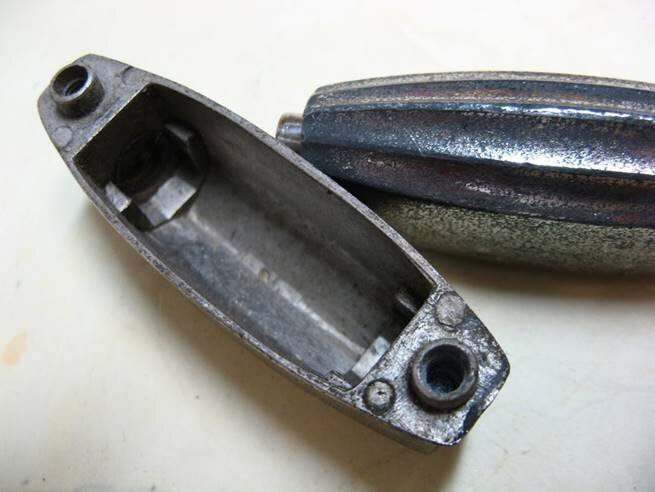
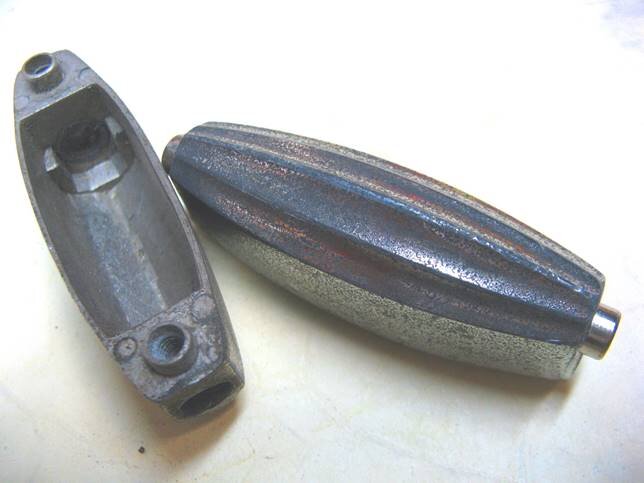

The Slingerland “Streamlined” lugs were used on snare drums, bass drums (a larger version) and tom toms. While Leedy is credited with the first modern non-tubular lug casings, Slingerland was the first to use them on tom toms and bass drums. On the very first Slingerland Radio King tom toms, even though only one threaded insert was necessary, double ended snare lugs were often used with the unnecessary second insert intact! By 1937, proper single ended tom tom and bass drum lugs were being used. Snare drum lugs were also used for center lug design tom toms as a lower priced option but that option was discontinued by 1940.
All streamline bass drum and tom tom lugs were offered from 1935 until 1948 (so called “beaver tail lugs” would replace them in 1948). Streamline snare drum lugs were used until 1955.
Gene Krupa behind a set of Radio Kings. Notice the use of actual double ended snare drum lugs on his tom toms.
Streamline lugs on Radio King tom toms

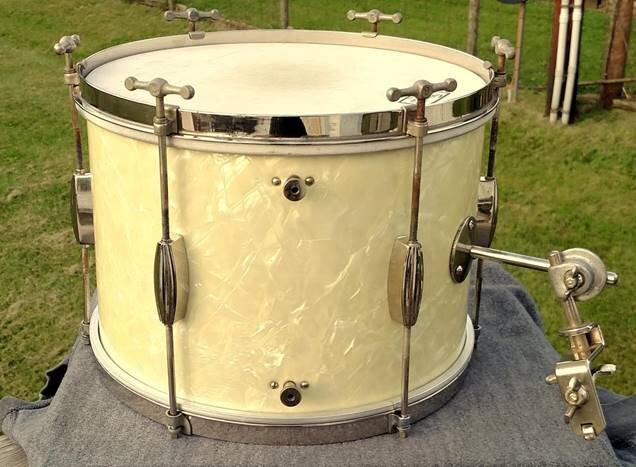
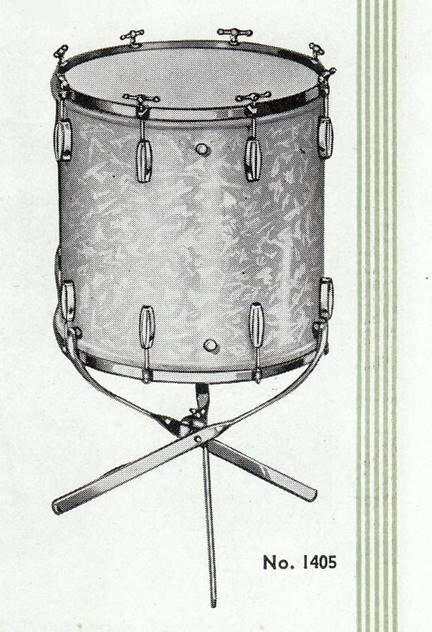
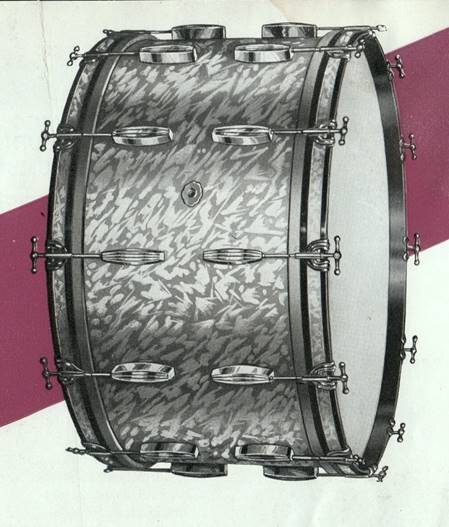
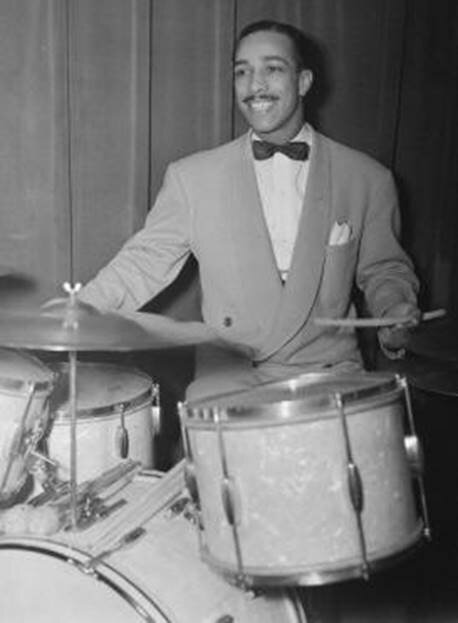
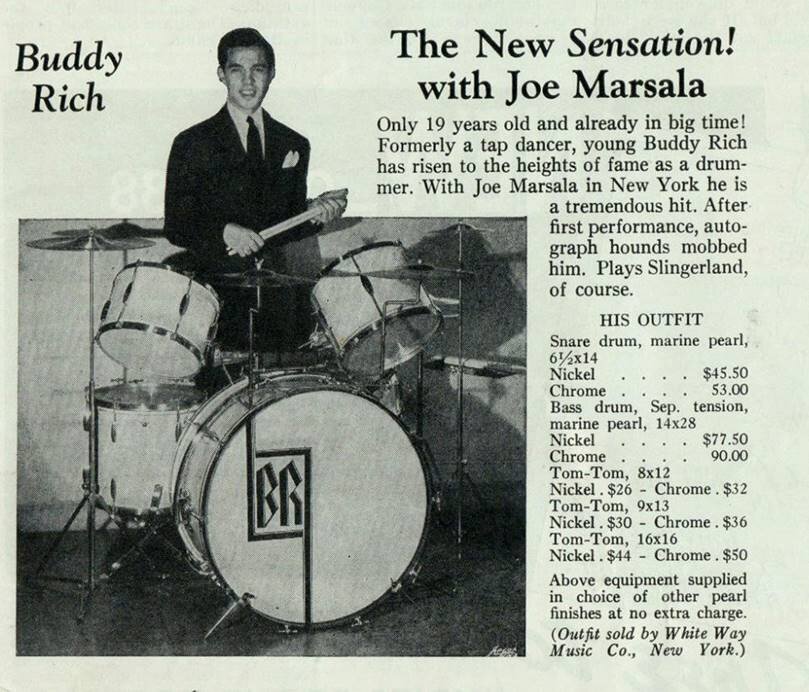
To save a little money (five dollars), drummers could order a tom tom with tubular lugs and tacked-on bottom heads. However, by 1940, they were no longer available and were offered only with streamline lugs. They were not considered to be Radio Kings. It is interesting to note that Gene Krupa’s first Radio King set had separate tension bass drum and tom toms with tubular lugs on top and bottom. So, were they “true Radio Kings”?
1936 “TUNEABLE TOM TOM”
GENE WITH TUBE LUG TOMS AND BASS
(from the 1936 catalog)
BELOW LEFT to RIGHT: #549 Separate tension bass drum lug, #547 snare drum lug and a separate tension tom tom lug (Oddly, no catalog number was listed for these tom tom lugs in the late 1930’s and early 1940’s. However, in the late 1940’s and early 1950’s, the #547 catalog number was assigned to the tom tom lug and the snare drum lug became the #547-S).
The photo below (bass drum) shows the #548 single tension bass drum lugs on a drum. These had no springs or swivel nuts. A long metal rod passed through the lug, attached to the hoops by claw hooks. By turning the tympani handles, tension on both heads could be adjusted. This actually worked quite well, was less expensive, and weighed less than separate tension drums.
Below: Inside view of a bass drum lug
Early Streamline tom tom lugs incorporated a metal “slug” that was used in place of the second threaded insert. In this way, snare lugs could be adapted for use as a tom tom lug. Throughout the years, various wall thicknesses can be seen on all streamline lugs. Below is one of the thicker varieties. Some were quite thin. Note the “slug” insert.
In 1940, Slingerland introduced a new version of the Streamline lug in addition to the other lugs. The new “Super” lug was offered on certain snare drums (sixteen lug varieties) and was also available as an option on tom toms….and even bass drums (rare). This new lug was relatively small. While quite “modernistic” in appearance, it was prone to breakage under higher tension. Note: These Super lugs are often referred to as “small beaver tail” lugs. Three versions of this early 1940’s lug were produced. The first version has a number “1” imprinted inside the lugs. The second and third versions are also numbered in that manner and they differ from the first version in that the tension rod hole is punched higher up on the front of the lug. This was probably due to changing types of Slingerland hoops.
1940 “SUPER” LUG
1940 “Ray McKinley” model with Super Lugs
Hollywood Ace model
Ultra-rare 14x24 bass drum with small beaver tail lugs (1940)
World War Two
During World War Two (June 1942), the United States Government ordered that all non-essential items were to be made with very few metal components. The “Rolling Bomber” line of drums was Slingerland’s answer to these new government restrictions. Wooden lugs carved from walnut or rosewood were used. Two sizes were offered for bass drums, tom toms and snare drums. For more information on drums of World War Two, please see my web page: Drums of World Wa
After the war, Slingerland gradually resumed normal drum production and their instruments were basically the same as their pre-war offerings. For a brief period near the end of the war and immediately after, wood hoops were installed on tom toms and bass drums, due to the brass shortage.
Because metal was still somewhat scarce, some drums were made using less metal than usual. The bass drum below (aluminum badge era) has only eight lugs per side! Most likely this drum was made either toward the end of the war or right after.
In 1948, a new improved version of the Streamline tom tom lug was introduced. It was much the same in appearance as the small “Super” (beaver tail) lug but was longer and slightly heavier. This new lug replaced both the large single-ended Streamline bass drum lugs as well as the single-ended Streamline tom tom lugs of the late 1930’s-early 40’s. Collectors often refer to this lug as the “large beaver tail”.
The original Radio King Streamline snare drum center lug of the late 1930’s was still being used on all eight lug snare drums. Although this lug had seen a few subtle structural changes over the years, it would remain in use until the mid 1950’s.
1948-54 Streamline tom tom and bass drum Lug
This new larger beaver tail lug had the same attachment screw hole spacings as the original Streamline tom tom lug and was now used on both bass drums and tom toms. The old extra large, single-ended bass drum lugs of the 1930’s and early 40’s were discontinued. However, the large double ended bass drum lug was still offered on less expensive single tension bass drums. Also, the Super lug was still being used on all sixteen lug snare drums and was optional on tom toms. The “Super” lug of 1948 had undergone a face-lift and a “ledge” was added to the front of the lug. It was now heavier and less prone to breakage.
The new post-war version of the Super lug (1948-54) -note the addition of a “ledge” at front.
……Compare the two versions…..
Left: 1948-54…………………………..Right 1940-47
1953 Radio King with later version Super lugs
Bongo Tom Tom with newer Super lugs
1949 Slingerland Radio King sets with new Streamline lugs
1953 RADIO KING SET WITH BEAVER TAIL LUGS
1955 brought a radical departure for Slingerland’s hardware design. All versions of the old cast metal Streamline and Super lugs that had changed relatively little since the late 1940’s were no more. In their place were the new “Sound King” lugs. These futuristic looking Sound King lugs really were “streamlined” in appearance and constructed out of a much more durable alloy. Compared to the somewhat fragile “pot metal” lugs of the previous two decades, the Sound King lugs were practically indestructible. Like their predecessors, the new Sound King lugs came in several varieties: Large for bass drums, small for tom toms and 16 lug snares, and a large center snare drum lug (see below). NOTE: The smaller lug which was used on snare drums (16 lug variety) and tom toms was not introduced until around 1956-57. All of the Sound King lugs would stay pretty much unchanged well into the 1990’s.
1955 CATALOG
EARLY SOUND KING TOM LUGS (note the large size)
Sound King lugs circa 1958
1950’s Radio King snare drum with Sound King lugs
Slingerland drum sets with Sound King lugs circa 1965
TENSION RODS
Shown below are the various bass drum tension rods (or tympani handles) used from the 1928 through the 1960’s. The earliest bass drum rods had the flat head, often with an “S” stamped into it. These were also used on tom toms as an option (center). Around 1940, the round head type was used. The more squared off style was used sometime during the 1940’s and utilized a washer. Later a ridge was added and the washer was not needed. I assume the squared rod with the thick washer came first. The last photo shows the Sound King style of the late 1950’s-1960’s. The dates listed are estimates only.
#978 …..1928 - Late 1930’s This “S” design was also used on shorter T-rods for 16x16 toms.
1939-1941
1942-1945
1946-1958
1959-1965
The photos below show the early bass drum claw hooks and the double grip hooks. In the late 1930’s, a bass drum could be ordered with either type. The double grip style was also used on some tom toms and marching snare drums. The double grip claw was replaced with the new Sound King claw in 1958. However, they continued to see some use on lower line drums and marching drums well into the 1960’s
Sound King Claw 1958 -
Here are the various types of snare drum and tom tom tension rods. It is possible that any style could have been used at various stages depending on availability.
TO CONTINUE OR RETURN TO ANY OTHER SECTION IN THIS GUIDE OR TO RETURN “HOME”, CLICK ON A LINK BELOW…
CONTENTS:
LUGS
STRAINERS
DRUM FINISHES
MISCELLANEOUS
RETURN HOME


